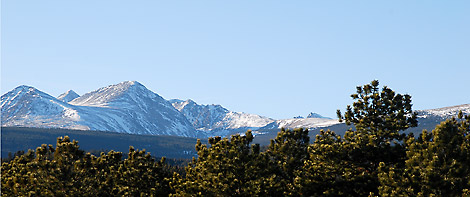The Kueppers lab has active funding from DOE, NSF and USDA in research areas described below, which require a combination of field measurements and computational approaches.
 Climate-Ecosystem Feedbacks
Climate-Ecosystem Feedbacks
Two-way interactions between climate and ecosystems that amplify or damp the climate's initial response to elevated greenhouse gas concentrations are known as feedbacks. Amplifying interactions are considered positive feedbacks, and dampening interactions are considered negative feedbacks. We use climate models to quantify the climate's sensitivity to regional scale changes in ecosystem properties and distribution. Our new emphasis in this area is focused on tropical forest feedbacks to climate change as part of DOE's Next Generation Ecosystem Experiments Tropics (NGEE Tropics), specifically the role of tropical forest dynamics (dispersal, recruitment, growth, and mortality) in climate system feedbacks.
 Ecological Consequences of Climate Change
Ecological Consequences of Climate Change
Past and future climate change can have diverse effects on ecological systems, including shifts in the geographic ranges of species. We began the Alpine Treeline Warming Experiment to learn how subalpine and alpine species' geographic distributions may be altered by climate warming in the Colorado Rocky Mountains. We also have established GLORIA sites to observe alpine ecosystem change through time near the Rocky Mountain Biological Lab. Finally, we have modeled shifts in climatically suitable habitat for important tree species, such as California's blue oak and coast redwood, using statistical models, climate observations, and output from climate models.
 Alpine Treeline Warming Experiment
Alpine Treeline Warming Experiment
Alpine ecosystems can thought of as islands of biodiversity, isolated from each other by surrounding lower elevation forested areas. The species in these ecosystems may be particularly vulnerable to a warming climate given their isolation and adaptations to very cold conditions and short growing seasons. In addition, an advance in high-elevation treeline may alter local hydrology, biodiversity, and nutrient cycling. The ATWE uses infrared heaters to warm soil and plant surfaces by an amount comparable to current average projections of climate warming in the year 2100. We are examining the effects this warming may have on alpine and subalpine plant species and communities. The experiment is being conducted on Niwot Ridge, above Boulder, Colorado.
 Agriculture and Climate Change
Agriculture and Climate Change
Agriculture has profoundly affected the landscape. In California alone, over 18 million acres are used for irrigated agriculture. Changing land cover and land use can significantly affect local and regional climate. We have been exploring these effects using regional climate models in California and the continental U.S. We also are using statistical and process-based yield models to estimate the impact of climate change on crop yields and yield variability. We are collaborating with Elliott Campbell, Wyatt Thompson and others to learn how climate-induced changes in yield affect crop production and markets, and how adaptations at the farm and policy levels may impact prices and production.
Past ProjectsIn past work at the Rocky Mountain Biological Laboratory, we conducted field measurements to help us understand how montane and subalpine forest carbon cycling responds to natural climate variation.